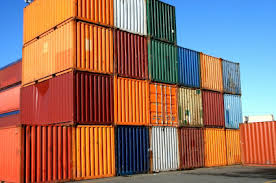 Every year there are seven million, 20-foot containers pass through Australian ports. Labourers who open, inspect, unload, and handle contents are prone to exposure to residual fumigants. Majority of the shipping containers are fumigated in compliance for bio security and then sealed during transit over an extended period of time. Products being shipped may also contain hazardous chemicals that were being used during production process like solvents, resins, and glue. In Australia, banning of fumigants or chemicals used during production overseas are also enforced.
Every year there are seven million, 20-foot containers pass through Australian ports. Labourers who open, inspect, unload, and handle contents are prone to exposure to residual fumigants. Majority of the shipping containers are fumigated in compliance for bio security and then sealed during transit over an extended period of time. Products being shipped may also contain hazardous chemicals that were being used during production process like solvents, resins, and glue. In Australia, banning of fumigants or chemicals used during production overseas are also enforced.
Last year, Safe Work Australia published a report "Hazard Surveillance: Residual Chemicals in Shipping Containers" to report the high levels of chemicals in shipping containers. The findings in the report addressed potential issues for worker's health when shipping containers are unloaded. Similar results were discovered in testing the shipping containers in a scientific research done by The Australian Customs and Border Protection Service. This study was commissioned by SafeWork to investigate further at warehouses or distribution centres where shipping containers were unpacked.
The methodology used in measuring the exposures for workers based in Melbourne and Brisbane used a combination of gas sampling techniques and video exposure monitoring. The report offer indicative results and thus self-reported work methods and self-reported health symptoms were also being probed.
This study was done by the Centre for Public Health Research at Massey University with the following key objectives:
- Measure the level of exposure to methyl bromide and some other residual chemicals among workers who are responsible in inspecting, opening, and/or unpacking fumigated shipping containers.
- Determine sources of exposure by checking activities and tasks associated with exposures.
- Offer solutions that prevent/reduce peak exposures.
- Enforce standard work practices whenever labourers try to unpack fumigated containers.
- Check workplace ventilation and air where the unloading and storage from containers was conducted.
- Analyse neurobehavioral, respiratory and other relevant symptoms in a group of workers including those also that are only inspecting by comparing their conditions with those not involved in these activities.
The report also detailed other work hazards in workplaces where shipping containers are unloaded. These areas are typically high-risk environments owing to the transfer of goods through transport vehicles.
Some of the common hazards mentioned in the report were:
- Dangerous placement of containers at the site of work
- Falls, slips and trips
- Falling things.
- Dangers in manual handling
- Inadequate pedestrian and mobile plant divider
- Palletising of goods for storage
- Environmental risks like temperature
- Diesel fumes
- Disposal of shipping containers from a site


